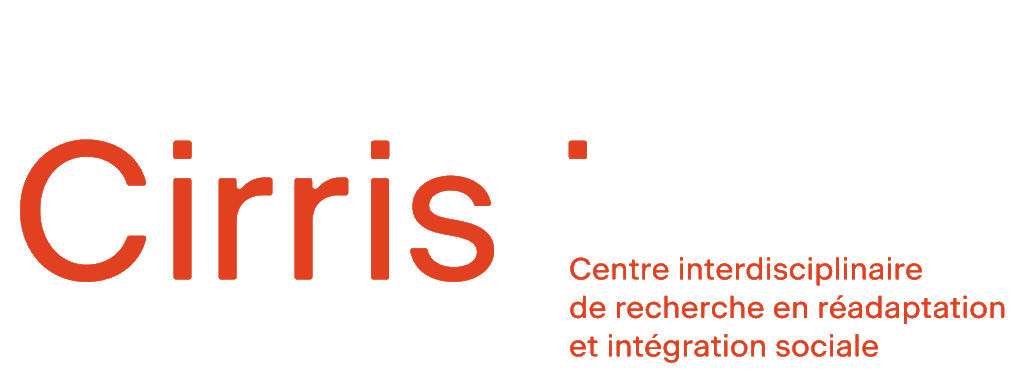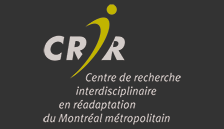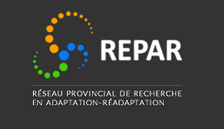Exploring cognitive-social factors underlying pedestrian navigation following chronic moderate-to-severe traumatic brain injury (m/sTBI) using virtual environments
Dysfunctions in reading emotions of others, mobility and social participation are hallmarks of m/sTBI. This project addresses all three, responding to the AQTC’s need to further understand and raise awareness about nonverbal communication deficits of persons with m/sTBI and their impact on function, participation and inclusion. Specifically, an inability to recognise emotion during a collision avoidance task can negatively affect interpersonal interactions, leading to poor social participation and inclusion. With AQTC’s input, the team will develop virtual reality (VR) scenarios with avatars to investigate emotion recognition abilities during mobility in m/sTBI participants and their impact on pedestrian interactions for collision avoidance. Results and VR scenarios will be used for presentation/discussion at AQTC with the different stakeholders, to develop awareness material and to support the future development of a VR tool for the assessment and training of social cognition abilities, with all actions targeting enhanced social participation and inclusion after m/sTBI.
Objectives:
This project will specifically aim to further the understanding of the impact of social cognition on an important mobility task involving social interactions, pedestrian collision avoidance, as well as to understand the related deficits in chronic m/sTBI. The ultimate short-term goal is to raise awareness on such deficits for people with m/sTBI and, over the longer term, improve social participation and social inclusion for them.
Milestones:
- Obtain ethical approval
- Technological development:
- Development avatars with different gait patterns
- Development of avatars with different facial expression
- Creation of virtual community environments and scenarios and refinement
- Data collection
- Data analysis
- Dissemination of findings: Creation of awareness material, presentation at AQTC office and dissemination to the scientific community (articles and scientific conferences)
Last update : July 15, 2020
Global progress
1-Obtain ethical approval
2-Technological development
3-Creation of virtual community environments and scenarios and refinement
4-Data collection
5-Data analysis
6- Dissemination of findings
Team members
(In alphabetic order) Pascal Brodeur, principal partner | Assistant Director, AQTC Philip Jackson, co-investigator | researcher, CIRRIS and Professor, École de psychologie, Université Laval Anouk Lamontagne, principal investigator | regular researcher, CRIR and Professor, School of Physical and Occupational Therapy, McGill University Nathalie Lamothe, principal partner | Social Integration Counsellor, AQTC Sean Lynch, post-doctoral fellow | Université Laval and McGill University Brad McFaydyen, principal investigator | regular researcher, CIRRIS and Professor, Département de réadaptation, Université LavalIntersectoral collaboration agent
Scientific sectors
Innovation stages
- Émergence, Expérimentation
All projects
- Accès à l’information et à sa compréhension pour une société inclusive
- Accompagnement par les pairs pour les personnes vivant avec la schizophrénie
- Co-development of intergenerational activities to break with ageism and support the social participation of people living with the after-effects of a traumatic brain injury.
- Action-research for the implementation of a hearing aid valorization program offered in the community and aimed at seniors with a hearing loss
- Improving the accessibility of information and communication in the Montréal Museum of Fine Arts
- Améliorer la connaissance de l’expérience utilisateur d’électroménagers pour des personnes vivant avec une déficience visuelle
- Améliorer la qualité de vie et la participation sociale des personnes en situation de handicap : identification des besoins à intégrer aux applications mobiles
- Offering learning opportunities adapted to autistic children: a lever for social participation
- Autisme et vieillissement : analyse des indicateurs de santé et de bien-être des personnes
- Avatar pour l’interprétation en langue parlée complétée (LPC)
- Para-athlete Technology Needs
- CARE PLAY: Community And REsearch PLAYing together using physical literacy knowledge translation tools targeting children with disabilities in Quebec
- Co-construction d’un cours de danse adaptée dans la communauté pour les enfants avec la paralysie cérébrale : Faire tomber les barrières
- Co-construction d’un programme de formation continue des acteurs municipaux en lien avec les plans d’action d’accessibilité universelle
- Co-construction of tools to foster inclusive environments for the social participation of adults with disabilities- in the context of gender and sexual diversity
- Co-design of an Assistive Internet Navigation Device for People with Visual Impairments
- Co-Creation of Leisure Experience in an Inclusive and Accessible Theatre Space: The Case of the Segal Centre for Performing Arts.
- Co-développement d’ateliers pour favoriser la connaissance de soi et la communication des adolescents avec un TDL
- Co-development of workshops to promote psychological well-being after a stroke
- Co-development of an active listening training for Autism Support volunteers
- Co-constructing Neuroinclusion: Creating and piloting a tool to assess accessibility and inclusivity
- Understand and make others understand: Operationalizing an immersive design fiction tool to promote social participation by deaf people
- Connexion Spectrum : la sexualité et les saines relations
- Contraintes biomécaniques du basketball en fauteuil roulant
- Étude de cas en surdicécité visant à tester la faisabilité clinique, sociale et économique de nouvelles modalités de communication en face-à-face et à distance
- Exploring cognitive-social factors underlying pedestrian navigation following chronic moderate-to-severe traumatic brain injury (m/sTBI) using virtual environments
- Favoriser l’autodétermination lors de l’apprentissage de la conduite automobile chez les jeunes adultes ayant des incapacités
- Staff training and adapted physical activity
- Formation et familiarisation à l’utilisation du réseau régulier de transport en commun : un état de la situation des besoins et des ressources pour les personnes ayant des incapacités.
- Formation/entrainement pour faciliter l’utilisation des réseaux de bus et de métro accessibles par des personnes ayant des limitations fonctionnelles motrices
- Adapted physical activity for community organizations
- Identifying the Fundamental Movement Skills for Pediatric Manual Wheelchair Users: A Step Towards the Development of Inclusive Physical Education and Social Participation
- Impacts d’orthèses robotisées des membres supérieurs
- Inclusion sociale par l’activité physique en plein air chez les enfants atteints de trouble de développement de la coordination
- Artificial intelligence for people with Parkinson’s disease
- The Mutual Aid Brigade: a vehicle for a stable, safe and healthy home.
- Le Café-IN : carrefour d’échange et de partages pour l’inclusion sociale des personnes ayant un traumatisme craniocérébral
- Les déterminants d’une expérience inclusive dans des ateliers créatifs : le cas du réseau des Bibliothèques de Montréal
- Logement social pour adultes autistes en quête d’autonomie
- Mobilizing the community, to design a support ecosystem adapted to women who are victims of domestic violence and have suffered a traumatic brain injury.
- Mon futur chez-moi en 3D – Map It
- Musées inclusifs : un état de la situation de l’accessibilité universelle dans les musées du Québec
- Participation sociale des personnes ayant des incapacités dans la dynamique de développement régional inclusif
- Fatherhood, co-parenting and disability: what are the experiences of fathers with disabilities in Quebec?
- Community matters: Promoting social participation for individuals living with early dementia and their partners.
- Pour une salle de classe inclusive
- Projet ceinture intelligente – Smartbelt
- Promoting Audiodiversity: The Right to (Fair) Self-Representation in the Media
- Recommendations for an inclusive digital budgeting assistance solution for individuals with traumatic brain injury.
- Réfléchir pour agir ensemble en formation et en sensibilisation
- Without taboos: Uniting for the inclusion of the sexual experiences and needs of adults with motor disabilities in sexology and rehabilitation
- Hiking trails: towards an accessible classification
- Soutenir ensemble la mobilité d’ainés présentant des incapacités: comment favoriser leur utilisation du transport en commun et leur participation sociale?
- Spina Bifida and aging: co-development of a toolbox
- Sport and rehabilitation
- Système électronique musical pour l’inclusion et la réadaptation
- Transition vers l’inclusion
- An Exploratory Study of Deaf and Hard of Hearing Women’s Access to Social Services
- Learning unit and inclusive work environment
- Utilisation des technologies de l’information et de la communication (TIC) d’usage courant par les personnes ayant une surdité
- Valoriser les pratiques quotidiennes des parents d’enfants ayant des particularités développementales : la créativité parentale comme moteur d’inclusion sociale
- Visitabilité des commerces
- Évaluation des exigences biomécaniques et physiologiques du ski paranordique




